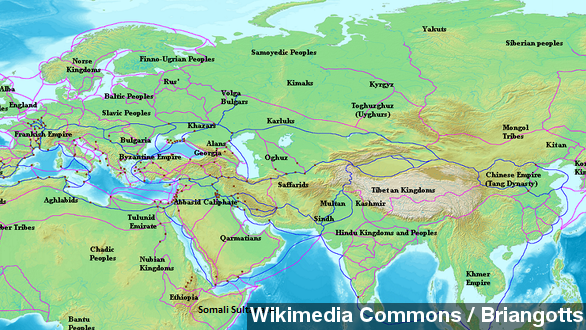The DNA sequencing of the earliest known North American remains show Native Americans might have come from the Eurasian region.
The more-than-12,000-year-old remains of an infant, named Anzick-1, were discovered in 1968 in Montana at the only known burial site of North America's first known indigenous culture, the Clovis people. (Via KWYB)
The whole-genome DNA evidence disproves an alternative theory that Native Americans came from Western Europe before the last Ice Age. It appears they actually have Siberian origins. (Via NPR)
The sequencing also reveals the Clovis people, who are believed to be the first human settlers of the New World, are direct ancestors of today's Native Americans. (Via Texas A&M University)
According to the National Post, the study's co-author Michael Waters explains the evidence also points to a "single migration" via the Bering Strait of early settlers who then dispersed across North, Central and South America. He adds, "In essence, the Anzick boy tells us about the epic journey of our species."
The infant was believed to have been between 12 and 18 months old when he died, although his cause of death is unknown.
He was buried alongside several Clovis tools and coins, which are currently on display at the Montana Historical Society. (Via KRTV)
The news comes after the announcement of another planned DNA sequencing — that of Richard III's remains, found buried underneath a parking lot in England. (Via CNN)
According to CNN, scientists will attempt to reconstruct what the ancient monarch really looked like, providing the face of the king with no known portraits created while he was alive.
Scientists say they're making arrangements with Native American tribes to rebury the Anzick remains.


